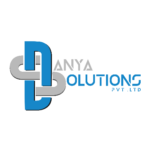Information fragmentation is not an obstacle, as DaaP allows a holistic view of your knowledge landscape. Comparability with Traditional Information Management ApproachesDaaP represents a departure from traditional information management approaches in several key methods. Traditional data management typically involves disparate and siloed knowledge repositories, making it difficult to access and manage knowledge cohesively. In contrast, DaaP centralizes information right into a unified platform, simplifying knowledge administration and access.
Facilitating Real-time Data AnalysisReal-time knowledge analysis is a trademark of DaaP. Traditional techniques usually battle with processing information in real-time, but DaaP is designed for it. By enabling the fast analysis of contemporary information because it’s generated or ingested, organizations achieve a competitive edge. They can reply to market adjustments, customer behaviors, and rising trends in actual time, enhancing their agility. Historical Context and Evolution of DaaPThe idea of Information as a Platform (DaaP) has advanced in response to the growing complexity and quantity of data generated by organizations over time.
This could presumably be through dashboards, reports, APIs, or even direct entry to datasets. The applications of data as a product span throughout varied industries, each with distinctive challenges and alternatives. Simply like all product, knowledge needs to be designed, built, maintained, and continually improved. It’s like using a map that’s lacking streets and landmarks — you may eventually get there, but there’ll be a lot of wrong turns, wasted time, and frustration. The information they analyze gives pilots personalised recommendation on the means to optimize their flights based mostly on things like fuel efficiency and flight paths.
Nevertheless, the truth that many organizations nonetheless rely on spreadsheets suggests there’s still more work to be accomplished to show how useful advanced, integrated information management solutions can be. Simply because the airline needs to ensure the aircraft is massive and durable sufficient to deal with the passengers, organizations must use scalable infrastructure to accommodate rising information volumes and multiple access requests. Depending on a corporation’s particular enterprise wants and market segments, there are a number of cloud-based platforms, open-source options and business platforms from which organizations can select. By following these core principles, advertising groups can leverage data-as-a-product to reinforce their methods, optimize marketing campaign performance, and drive better enterprise outcomes. Data-as-a-Product (DaaP) is an strategy to information administration where data is treated as a product that’s curated, maintained, and delivered to customers with the identical stage of high quality and care as a physical product. Embrace DaaP with Spruce TechnologyIf you’re able to embark on a transformative journey in information management and harness the full potential of your data belongings, don’t hesitate to reach out to Spruce.

Put merely, DaaP is the appliance of confirmed product and engineering ideas to data. By mirroring profitable product improvement methodologies, organizations acquire the agility and flexibility central to harnessing well timed data-driven insights. Adopting a data-as-a-product strategy positions firms to be extra proactive quite than reactive. With real-time information insights, businesses can anticipate market developments, determine emerging alternatives, and make informed choices quickly.

Also, a data product would also ensure accessibility via a user-friendly self-service interface. This functionality would allow for straightforward report customization and access, a sublime solution. Whereas the data product offers a DQ repair, its complexity and culture can cause further data quality issues.
- This enhances the consumer experience and makes interacting with and deriving value from information simpler.
- Be Part Of us on April 3 to be taught how you can unlock the full potential of your information for AI with a hybrid, open information architecture.
- Every Time you’re prepared, get in touch with us to start with phase certainly one of your DaaP information technique — collecting high-quality data in actual time at scale.
This means solely amassing and storing data that’s really useful, ensuring that data is presented clearly, organized and user-friendly and ensuring the data fits the trade or area context. When these items are in place, DaaP enables the distribution of high-quality data inside the group. To make data more useful inside a company, it’s important that information units are straightforward to find, reliable and can work well with different knowledge. The essence of making DaaP knowledge simply discoverable and addressable within a corporation hinges on implementing a centralized registry or catalogue. This registry should element all obtainable DaaP knowledge, including metadata like possession, supply and lineage, enabling information customers, engineers and scientists to effectively find relevant datasets.
One of the 4 core rules of knowledge mesh is treating data as a product, which basically reshapes how you manage and make the most of information. The DaaP method ensures that information governance and compliance are integral to your data administration practices. By establishing clear policies, access controls, security protocols, roles, and obligations, you’ll have the ability to confirm whether or not data is handled according to regulatory requirements and internal requirements. This reduces the risk of information breaches, legal penalties, and reputational harm whereas promoting moral information usage. Data as a product (DaaP) represents a shift in pondering, the place you transform raw data into high-quality info merchandise. This modifies your knowledge strategy and empowers your workers to make smarter, more informed business selections, serving to you achieve sustainable progress in the long run.
The Latest Ai Information + Insights
It encompasses information high quality standards, entry controls, and regulatory adherence that empower you to handle your data ethically whereas protecting you from hefty fines. By treating information as a product, your group can remodel information into actionable insights that drive strategic selections and assist mitigate dangers. It leads to optimized resource allocation, increased operational effectivity, and the aptitude to establish new alternatives for development and innovation, offering a competitive edge. Treating data sets as standalone merchandise, designed with product management rules with the end-users in thoughts. Transform uncooked knowledge into actionable insights swiftly, unify information governance, quality, lineage and sharing, and empower information shoppers with dependable and contextualized data. The widespread use of knowledge visualization tools, an excellent part of DaaP, exhibits the increasing organizational investment in understanding data-backed insights.
Understanding Data-as-a-product (daap): Ideas, Implementation, And Benefits
Power BI Knowledge Catalog encourages the right use of knowledge and empowers enterprise users, no matter their technical skills, to generate their very own stories without technical assistance. Empower knowledge house owners to approve access immediately, enforce time-bound permissions, and hold a full audit path – all from one centralized workflow. Secoda helps your team move faster without compromising safety or compliance. Data as a Product (DaaP) is an idea AI Software Development Company that highlights the inherent worth of information. It encourages knowledge homeowners to current it in a user-friendly method, thereby capitalizing on its value.
What’s Information As A Product (daap)?
No Person knows where to look and no one is aware of tips on how to look as a end result of the paths to entry haven’t been outlined. The organisational architecture has not been constructed to facilitate an accessible and agile method to information and insights. Lastly, datasets which have been registered and whose quality has already been assessed should not be routinely accessible to everyone if knowledge security is to be assured.

Leave a Reply